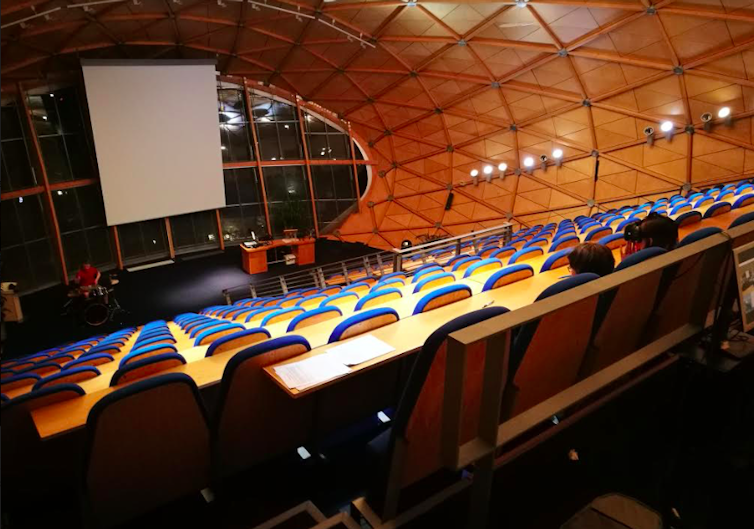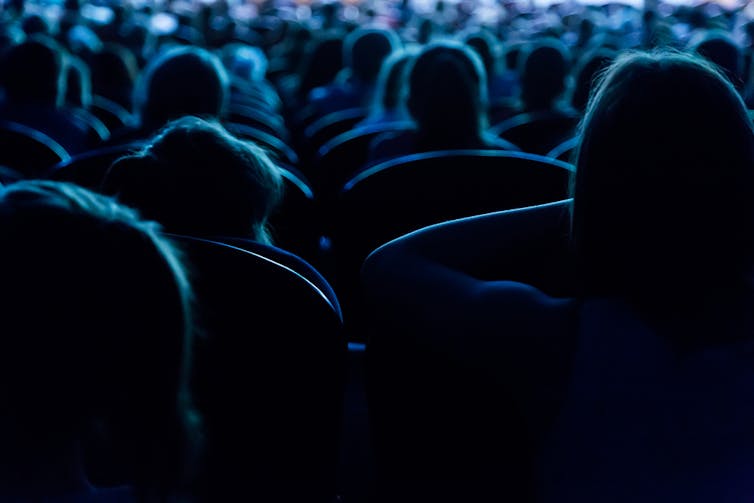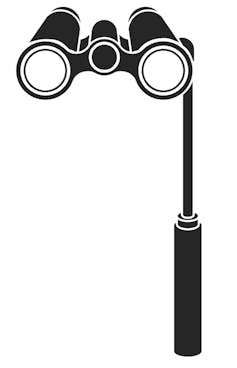What do Coldplay, Stevie Wonder and the Imagine Dragons all have in common? The answer, and well done if you got this right, is that they have all had recent live shows broadcast in virtual reality.
Music fans with VR headsets like Google Daydream or Samsung Gear VR have had the chance to feel like they were at these shows without ever having to leave their couches. Underground dance streamer Boiler Room has been experimenting with something similar for VR clubs. Earlier this year it transmitted a DJ set via headsets from Berlin, for example.
We are starting to see these offerings for two reasons. Improvements in the computing power and display resolution of smartphones have enabled them to support VR with little additional equipment – the Google Cardboard, a head-mounted case for phones, can be purchased for as little as £5. Affordable 360° cameras are also easily available, and the likes of YouTube already support 360° video, facilitating the creation and sharing of VR content. Once the stuff of specialists and simulation training, VR looks ready for lift off.
VR concerts and other live events appear to be a very attractive commercial proposition. Audience members unable to attend a show can experience it from the best seats in the venue, while artists deliver a rich performance to a wider audience. As a market, it could could easily become comparable to the way in which cinemas have become very successful at remotely transmitting events in the past few years.
But hang on. Before anyone gets too excited, my team at Edinburgh Napier University sees a couple of major problems with this type of VR event offering. Not only might it hit ticket sales for the live show itself rather than growing the audience overall, it could also diminish the user experience.
Hamburger hill
A live performance is about so much more than what you see and hear: it’s the feeling of excited people crammed into a space; the smell of beer on the floor; hamburgers wafting from a nearby trailer; the warmth on your skin when the sun comes out. It’s also about the way members of the audience influence what happens by interacting with the performers. These things can hardly be emulated by remote VR.
With this in mind, I’ve been involved in a series of studies looking at using VR headsets within actual events. Instead of simply providing an experience from the home, it becomes about enhancing an experience you are having anyway.
Testing VR at Napier. Augusto Esteves
The work was partly inspired by other studies which have used VR to trick participants into believing they had longer arms or bigger hands, or that they were holding objects of different sizes, weights or materials to the ones handed to them. In the same way, we were able to show that you can use VR to trick a person’s sense of embodiment and presence during a live show.
We arranged a live performance with guitars, drums and vocals in a lecture hall with 360° cameras and gave participants VR headsets and seats at the back. Compared to participants in the same seats without headsets, the VR wearers reported a greatly enhanced experience. Give concertgoers a VR headset and it seems you can make them feel as if they are watching from the front row, even if they are stuck behind a pillar at the back of the gods.
Move your head! Lapandr
Supersize my experience
VR has the potential to become the opera glasses of the 21st century, allowing anyone in a venue to get a closer look at the action whenever they want. Concertgoers would simply need to insert their phones into an appropriate head-mounted case and start a specific app. These headsets could be made available before the show for a small fee and returned at the end of the event – just like opera glasses or indeed 3D specs.
Hells yes. Panda Vector
You wouldn’t have to restrict the enhanced experience to the front row, of course: there could also be options to experience the show from the middle of the stage, from behind the drum kit, or from the orchestra pit. With a couple of taps, audience members get to feel as if they are part of the performance.
I can imagine artists objecting to performing to large numbers of people wearing headsets. But is it worse than the alternatives – of audiences recording the show on smartphones or having their VR experience on the couch? This way, at least the connection between audiences and performers is being supported. The audience’s eyes might be hidden, but those on stage will still be able to hear everyone singing, dancing, waving or clapping.
Having shown that enhanced live VR can work in practice, we are now looking to trial it in commercial shows in proper venues. It is time to face the fact that VR will become an integral part of live performances in future, and that the live events market is therefore facing a choice. It can either use VR as a tool to help audiences stay away, or as a means of radically enhancing how we engage with performances. I know what future looks more appealing to me.
 Augusto Esteves does not work for, consult, own shares in or receive funding from any company or organisation that would benefit from this article, and has disclosed no relevant affiliations beyond the academic appointment above.
Augusto Esteves does not work for, consult, own shares in or receive funding from any company or organisation that would benefit from this article, and has disclosed no relevant affiliations beyond the academic appointment above.



 China Adds Domestic AI Chips to Government Procurement List as U.S. Considers Easing Nvidia Export Curbs
China Adds Domestic AI Chips to Government Procurement List as U.S. Considers Easing Nvidia Export Curbs  Trump Signs Executive Order to Establish National AI Regulation Standard
Trump Signs Executive Order to Establish National AI Regulation Standard  Nvidia Develops New Location-Verification Technology for AI Chips
Nvidia Develops New Location-Verification Technology for AI Chips  MetaX IPO Soars as China’s AI Chip Stocks Ignite Investor Frenzy
MetaX IPO Soars as China’s AI Chip Stocks Ignite Investor Frenzy  SpaceX Insider Share Sale Values Company Near $800 Billion Amid IPO Speculation
SpaceX Insider Share Sale Values Company Near $800 Billion Amid IPO Speculation  SpaceX Begins IPO Preparations as Wall Street Banks Line Up for Advisory Roles
SpaceX Begins IPO Preparations as Wall Street Banks Line Up for Advisory Roles  SK Hynix Considers U.S. ADR Listing to Boost Shareholder Value Amid Rising AI Chip Demand
SK Hynix Considers U.S. ADR Listing to Boost Shareholder Value Amid Rising AI Chip Demand  ETH Whales on Rampage: BitMine Snags 138K ETH as $3,000 Holds Firm – Bulls Gear Up for $4,000 Moonshot
ETH Whales on Rampage: BitMine Snags 138K ETH as $3,000 Holds Firm – Bulls Gear Up for $4,000 Moonshot  Microsoft Unveils Massive Global AI Investments, Prioritizing India’s Rapidly Growing Digital Market
Microsoft Unveils Massive Global AI Investments, Prioritizing India’s Rapidly Growing Digital Market  Evercore Reaffirms Alphabet’s Search Dominance as AI Competition Intensifies
Evercore Reaffirms Alphabet’s Search Dominance as AI Competition Intensifies  noyb Files GDPR Complaints Against TikTok, Grindr, and AppsFlyer Over Alleged Illegal Data Tracking.
noyb Files GDPR Complaints Against TikTok, Grindr, and AppsFlyer Over Alleged Illegal Data Tracking. 





























